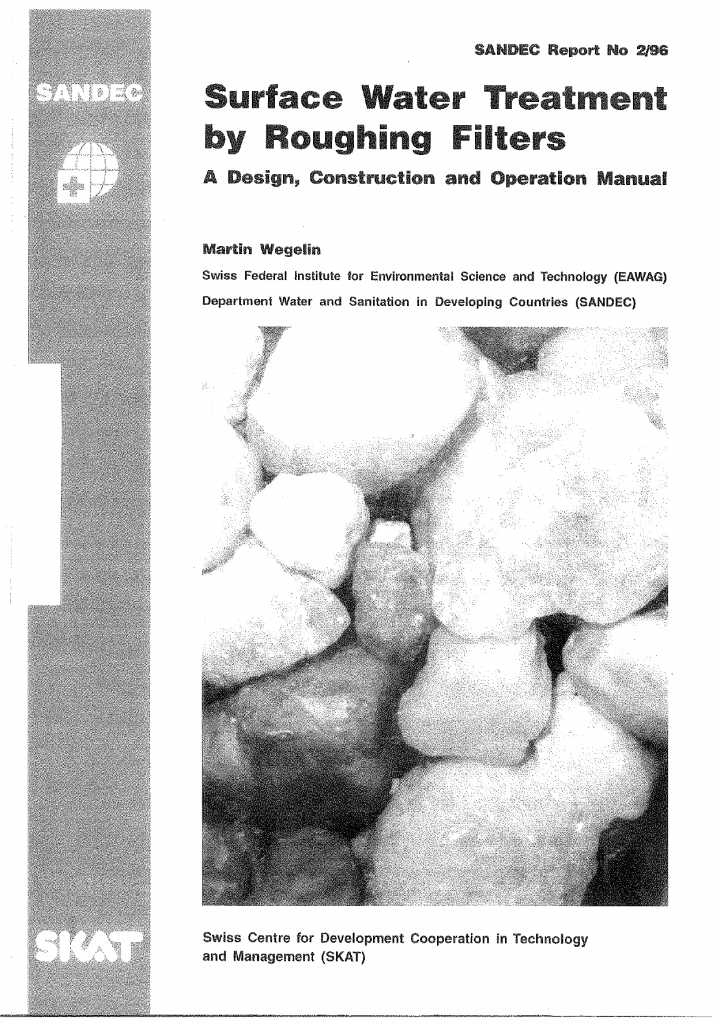Surface Water Treatment by Roughing Filters A Design, Construction and Operation Manual Wegelin, M. (1996)
Slow sand filtration applied as surface water treatment is particularly effective in improving the microbiological water quality. However, efficient application of this treatment process requires raw water of low turbidity. Pretreatment of surface water containing solid matter loads is therefore necessary. Chemical flocculation in conjunction with sedimentation for solid matter separation is generally inapplicable in rural water supplies of developing countries for a number of reasons, such as unavailability of chemicals, inadequate dosing equipment, difficult operation and maintenance procedures, as well as lack of local technical skills and trained operators.
Prefiltration is not only a simple, efficient and chemical-free alternative treatment process applied mainly for solid matter separation, it also improves the microbiological water quality. As different fractions of rough filter material are generally used in prefilters, they are called roughing filters. Similar to slow sand filters, they make ample use of local resources and hardly require mechanical equipment. Hence, roughing filters are generally an appropriate pretreatment technology for rural and small urban water supply schemes.
Various filter types have been developed to meet the different raw water qualities. Intake and dynamic filters are often used as first pretreatment step, followed by roughing filters operated either as vertical or horizontal-flow filters. These filters are usually cleaned hydraulically by fast filter drainage. In accordance with the multiple barrier concept, the series of different prefiltration steps applied is frequently the most cost-effective option for solid matter separation and also an efficient method for improving the microbiological water quality.
Prefilters and roughing filters are currently used extensively in water supply schemes in numerous developing countries and also in artificial groundwater recharge plants in industrialised countries. Practical experience shows that intake filters are capable of reducing the solid matter content by 50 -70 %, and roughing filters can achieve a particulate matter reduction of 90 % or more. Furthermore, prefilters and roughing filters can improve the bacteriological water quality; i.e., a 1-2 log reduction of faecal coliforms has often been recorded. The filters also reduce colour to some extent, dissolved organic matter and other substances found in surface water. However, stable suspensions with a large amount of colloidal matter are difficult to treat with roughing filters and will usually require the addition of coagulants.
Prefilters and roughing filters combined with slow sand filters provide a reliable, sustainable and particularly appropriate treatment method for developing countries. However, implementation of the technology alone may possibly fail, as hardware always has to be complemented by software. It is, therefore, very important to involve future users as much as possible in the planning phase, to adequately train treatment plant operators and to provide a post-project support which will contribute to enhancing a sustainable use of the treatment processes developed.
Bibliographic information
Wegelin, M. (1996). Surface Water Treatment by Roughing Filters A Design, Construction and Operation Manual SKAT
Filter / Tags
Guidelines and manualsEnglishWater (irrigation, process, other)

